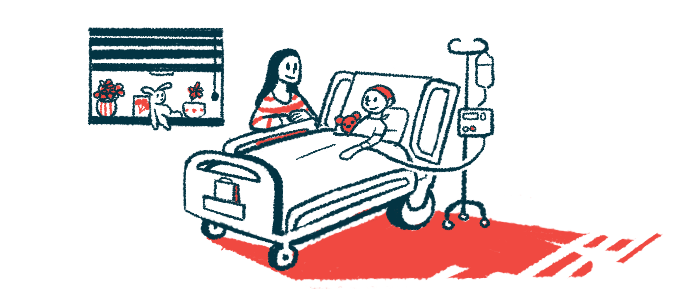General anesthesia safe for AADC gene therapy surgery: Case series
Complications may include changes in blood pressure, heartbeat, blood sugar, temperature

Prolonged general anesthesia appears to be safe for children with AADC deficiency undergoing surgery for gene therapy, according to the first case series of its kind.
Still, precautions must be taken throughout procedures due to complications associated with general anesthesia in this patient population, including abnormal changes in blood pressure, heartbeats, blood sugar levels, and body temperature.
“At last follow-up, we did not report overall postoperative complication due to anesthesia management and all children clinically improved as expected,” the researchers wrote. Case details were published in Pediatric Anesthesia, in the study “Case Series of Anesthetic Management of Gene Therapy in Children With Aromatic L-Amino Acid Decarboxylase Deficiency.”
In AADC deficiency, mutations in the DCC gene impair the production and/or function of AADC, an enzyme needed for producing certain neurotransmitters, the signaling molecules that nerve cells use to communicate.
Without AADC activity, neurotransmitter levels drop, giving rise to symptoms such as developmental delays, lack of muscle tone, and movement disorders. The autonomic nervous system, which controls involuntary processes like heart rate, blood pressure, body temperature, and blood sugar, is also affected.
The gene therapy Kebilidi (eladocagene exuparvovec-tneq) was approved in the U.S. last year and has been approved in the U.K. and European Union under the brand name Upstaza since 2022. It’s designed to deliver a healthy copy of the DDC gene to nerve cells and increase AADC activity and neurotransmitter production.
Because it’s administered directly into the brain, it requires general anesthesia, which interferes with nerve signals and suppresses the perception of pain during surgery. General anesthesia in AADC patients has been associated with complications, however, including abnormal blood pressure, irregular heart rates, cardiac arrest, declines in blood sugar, and an inability to control body temperature, hypothermia or hyperthermia.
Avoiding complications with gene therapy surgery
Here, researchers at the Adolphe de Rothschild Foundation Hospital in France described their experience with prolonged general anesthesia in three boys and one girl, ages 2-8, with AADC deficiency who had Upstaza therapy.
General anesthesia began with intravenous (into-the-vein) sevoflurane, an inhalational anesthetic, followed by atropine, which blocks the neurotransmitter acetylcholine, and the anesthetic ketamine. Rocuronium was a neuromuscular blocking agent used before the breathing tube was inserted, for which no complications were reported. Cefazolin was used as a preventive antibiotic.
Opioids weren’t used to avoid possible side effects related to abnormal heart rate and blood pressure.
Following general anesthesia, the team placed a line in an artery to monitor blood sugar every hour during the procedure. A temperature probe and a urinary catheter were also placed. During transport to the MRI, anesthesia was maintained using sevoflurane and shots of ketamine, and muscle relaxation was maintained with rocuronium.
“Continuous monitoring of body temperature is necessary as children with AADC are susceptible not only to hypothermia, but also hyperthermia,” the researchers wrote.
Starting surgery
The first skin incision was made between three to four hours after starting anesthesia. Each child received four infusions of Upstaza in the putamen, the brain area with the highest AADC activity.
All the children required diluted doses of norepinephrine infusion throughout their procedure to help maintain stable blood flow, and prevent low blood pressure and irregular heartbeats. They also needed vasopressors, which increase blood pressure by constricting blood vessels. No episodes of severe low blood pressure were reported and vasopressors were stopped at the end of the procedure.
“We suggest to use invasive arterial monitoring with low dose of diluted norepinephrine systematically to achieve [blood flow] stability throughout the procedures and MRI transfers,” the researchers wrote.
Body temperature was maintained using a forced-warmed air blanket and blood sugar was controlled with intravenous glucose infusion. No episodes of severe low blood sugar or complications related to autonomic dysfunction occurred during the procedures.
All the patients emerged out of anesthesia and the postoperative course was uneventful. Two children required a single dose of sugammadex to reverse residual neuromuscular blockade at the procedure’s end, but before emerging from anesthesia.
After the procedure, one child was transferred intubated to a pediatric intensive care unit due to a history of low muscle tone, swallowing impairment that required a feeding tube, and sleep apnea. The breathing tube was removed the day after surgery without complications.
All the children achieved adequate pain control without opioids using intravenous paracetamol and subcutaneous (under-the-skin) lidocaine.
No postoperative anesthesia-related complications were reported at the last follow-up and all the children clinically improved as expected, the team said.
“Using an anesthetic plan based on atropine, ketamine, sevoflurane, and a titrated infusion of norepinephrine, prolonged anesthesia appeared to be safe and reproducible in this population,” the researchers wrote. “Surgical and anesthesia planning is crucial in order to avoid and anticipate any perioperative complications.”






